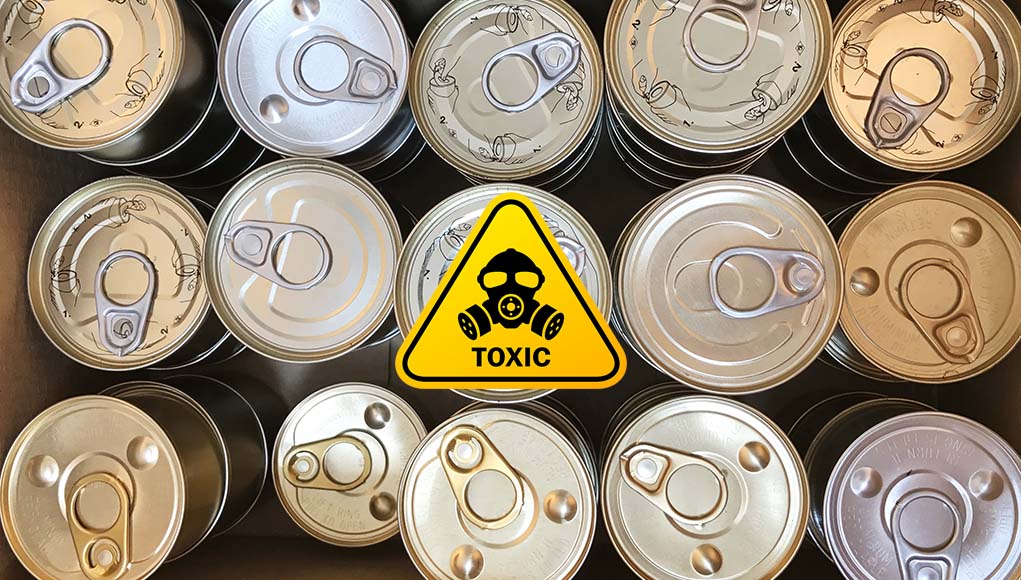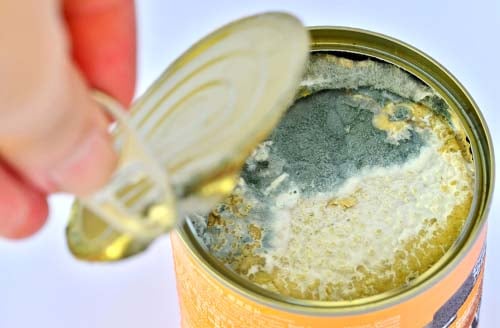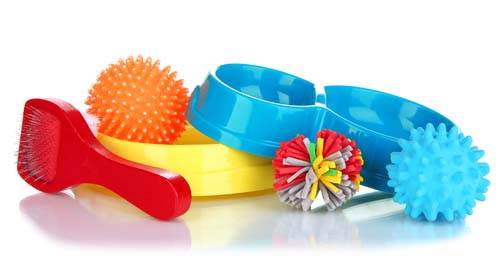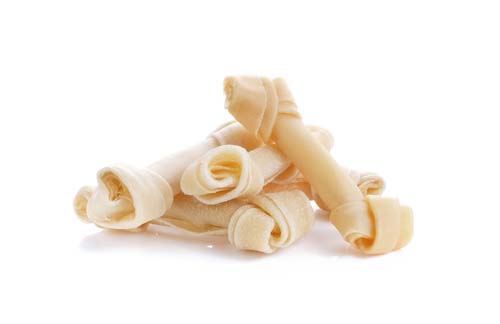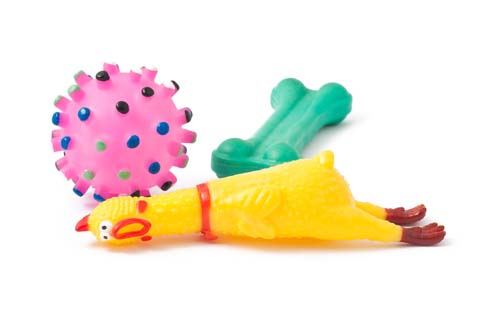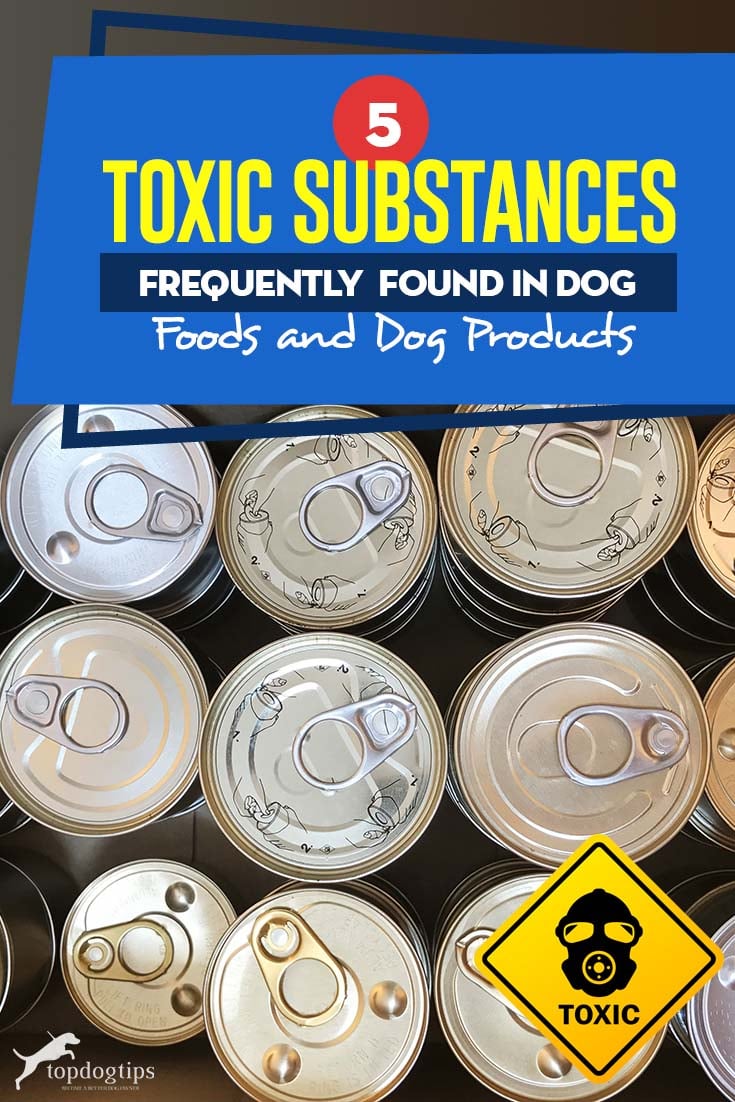As pet parents, we do everything we can to provide our pets with products that are healthy for them, or at least products that are not detrimental to their health. Unfortunately, there are companies out there that don’t have the same priorities and they knowingly produce or refuse to recall items that contain toxic substances. We took a look at some of these toxic substances and which dog supplies they can be found in.
What is a “Toxic Substance”?
In all instances of the phrase, “toxic substance” refers to any substance that is poisonous to living organisms. These substances can be found naturally or can be artificially created and carry out their toxic effects through a variety of methods; for example, by destroying cell membranes or interfering with the function of vital organs in the dog.
Toxic substances can be toxic to all or just some living organisms depending on how they affect the body and how the body processes it. A great example of this is theobromine. Theobromine, an alkaloid found in the cacao plant (and consequently found in chocolate), is a natural diuretic, heart stimulant, and vasodilator.
While theobromine is not toxic to the human body, it is toxic to dogs. This is because there is a small amount of theobromine in chocolate and the human body is easily able to process it quite quickly. In comparison, the canine body is much smaller and it is less efficient at processing theobromine, so the effects are not only more significant for your dog, but they are longer lasting as well.
How Do Toxic Substances Get into Our Pet Products?
 If we know that certain substances are toxic, how are they getting into our pet products? Often, toxins get into pet products accidentally. For example, when dog food companies experience a manufacturing error that results in excessive vitamin D in their food, such as a recent very large dog food recall of several brands.
If we know that certain substances are toxic, how are they getting into our pet products? Often, toxins get into pet products accidentally. For example, when dog food companies experience a manufacturing error that results in excessive vitamin D in their food, such as a recent very large dog food recall of several brands.
Then there are the toxins that get into our pet products intentionally. This usually happens when a company is aware of the toxic nature of a substance, but they stand to gain from using that substance in their dog products.
For example, they may save significantly on manufacturing their product by including BPA-contaminated components rather than buying components that are not contaminated. This means a higher profit for the manufacturer and – in their eyes – a better financial forecast to provide to investors.
How Do Companies Get Away With Using Toxins in Their Products?
The big question for pet owners is how companies get away with using toxic substances in their products without repercussions.
It all comes down to the regulation of the pet product industry and how the “rules” of regulatory boards are interpreted. This is rather a lengthy topic to cover, so in order to cover the intended purpose of this article, if you want to find out more about pet product regulation, we recommend reading this article about the regulation of pet food on PetCoach.com.
It’s also worth noting that there is currently NO regulatory body responsible for regulating the production of pet accessories, toys, and grooming products.
ALSO READ: 8 Cancer-Causing Dog Products (And How to Avoid Them)
5 Most Toxic Substances Frequently Found in Pet Products and Dog Supplies
1. Mycotoxins
Mycotoxins are a naturally produced compound that results from mold growth. Mycotoxins are toxic to our pets as well as to us and they can cause a range of health problems.
Mycotoxins are not included in pet foods purposefully but there are a number of instances where mold took hold in food and led to mycotoxin poison. There are a lot of mycotoxin varieties, but the one that causes most problems for dogs is penitrem-A.
Symptoms of mycotoxin poisoning depend upon the type of mycotoxin contaminating the food. Common symptoms of mycotoxin intoxication or mycotoxin toxicosis include vomiting, diarrhea, seizures, tremors, abdominal pain, liver damage, and death. Veterinary intervention as soon as possible is crucial for dogs experiencing mycotoxin toxicosis.
To avoid the possibility of Mycotoxin exposure, ensure that your dog’s food is always well sealed when purchasing and store it in a cool, dry, sealed container once opened. You can also check the production date of kibble – foods that were produced more recently have less chance of sitting in a warehouse where they can be at risk for compromised packaging and mold development.
For a firsthand account of one pet parent and her Labrador’s experience with mycotoxin poisoning read the article “Tainted Kibble And Our Switch To Bravo!” on the blog Philosophy of Dog.
2. PVC
Polyvinyl chloride has been found both in dog chews and in dog toys. PVC is a synthetic plastic polymer that is very brittle when it is first made but manufacturers add something called “plasticizers” to make it more flexible. There are different types of plasticizers added to PVC but the most common are phthalates. It is these Phthalates that are toxic to our pets and they are also thought to be toxic to humans as well.
Unlike mycotoxins, Phthalates are intentionally incorporated into vinyl/PVC pet toys. The CDC already has evidence that Phthalates has adverse effects on animals and yet, companies continue to use them. This is particularly disturbing since nine governments worldwide have banned the use of Phthalates completely.
Effects of toxicity due to Phthalates found in PVC have been reported to include varied reproductive problems and biochemical changes and toxicity in the liver and kidneys. These effects can occur as the result of your dog ingesting pieces of a toy that they have been chewing or after saliva contact with toys containing these Phthalates.
To avoid exposing your dog or your family to Phthalates, research the toys you are buying and make sure to avoid any that contain PVC.
3. Formaldehyde
Most of us know of formaldehyde as the chemical used during the embalming process, but it’s also used as a preservative in dog chews like rawhide as well as in pesticides, building materials, fertilizers, and resins. That said, let’s focus on the use of formaldehyde in your dog’s rawhide.
Formaldehyde is intentionally used in the production of rawhide. Layers of leather are separated, bleached, and then preserved with preservatives like Formaldehyde. Artificial coloring or flavoring may be added after this to make the chew more appealing.
The effects of formaldehyde exposure in animals have been chronicled through various animal studies. These studies show that exposure can result in stomach damage, behavioral changes, respiratory irritation, mucous membrane damage, lung damage, and cancer.
To avoid exposing your dog to formaldehyde, you should always be aware of the ingredients in your dog's food or treats. We recommend always going with natural treats or treats you make yourself so that you know exactly what’s in them. You should also ALWAYS avoid chews made from rawhide.
4. BPA
Bisphenol A or BPA is a synthetic organic compound that has long been used in the production of specific types of plastic and resin. BPA is found in many products used by humans as well as in our dog’s canned food containers, large plastic food containers, and toys.
There is currently a movement to encourage companies to ditch the use of BPA altogether and fortunately, this has resulted in fewer companies using the toxin, but imported products and budget companies continue its use.
Like formaldehyde and phthalates, BPA is intentionally incorporated into pet products (and human products) usually because it makes production cheaper and increases profits for a company.
The effects of BPA exposure in dogs include obesity, neurological problems, reproductive disorders, and cancer. Other studies in mice have also shown that BPA exposure can contribute to changes in brain development and change normal patterns of behavior.
To avoid exposing your dog to BPA always do your research on the contents of a product before buying it and avoid feeding canned foods which have higher levels of BPA.
5. Lead
Lead is a product that many of us are familiar with for its devastating health effects on humans. While laws have been enacted to regulate the use of lead in human products, there is little regulation of the dog toy industry. In fact, when it comes to the regulation of lead in pet toys, there are no laws in place at all.
It is less common for toys made in the U.S. to use lead in their dog toys than it is for Chinese companies, but it is not unheard of.
When lead is incorporated into dog toys, it is almost always done purposefully to create a stronger and more durable product and not as the result of accidental contamination.
The effects of lead exposure in dogs vary depending upon how much lead your dog has been exposed to and for how long your dog has been exposed to it. Lead builds up in the system over time so the longer your dog is exposed to it, the more significant their symptoms are likely to be.
In general, lead poisoning symptoms in dogs include lethargy, vomiting, diarrhea, abdominal pain, lack of appetite, regurgitation, anxiety, blindness, and seizures. Treatment for lead exposure is crucial and if you suspect that your dog may be exhibiting symptoms, an emergency vet appointment is required.
It is also important to note that even without lead in their toys, it’s possible for your dog to be exposed to it through their drinking water or through lead paint in old homes. We recommend always having the paint checked if you buy an older home and always checking the quality of your water and using a filter if you need to. These proactive steps can not only save your dog from uncomfortable and possibly deadly symptoms, but they can also keep your family from exposure as well.
How to Keep Your Dog Safe
So, how do you keep your dog safe from these and other toxins?
There is an increased level of awareness of toxins in pet products by pet parents and this is prompting companies to be more vigilant in order to avoid “bad press”. Not all companies are being as vigilant though, so here are a few things that you can do to be more aware of what you are giving your pets.
- Shop products from responsible companies that have a record of social awareness, and no history of recalls. These companies will almost always have no problem answering questions about their products so that you can be a better-informed consumer. If a company does avoid answering your questions, don’t give them the benefit of the doubt.
- Keep an eye on FDA recalls and warnings on pet products so if the products that you choose are contaminated, you can find out right away.
- Do your research and learn what products are toxic to your dog, this will make it easier to spot if they are present in pet products that you are considering purchasing.
- Avoid shopping with companies that have a history of frequent recalls or companies that deny ever having a problem with contamination but that have been proven to make pets sick by other pet parents and veterinarians.
READ NEXT: 7 Hidden Toxins in Your House That’re Poisonous or Cancerous to Dogs


